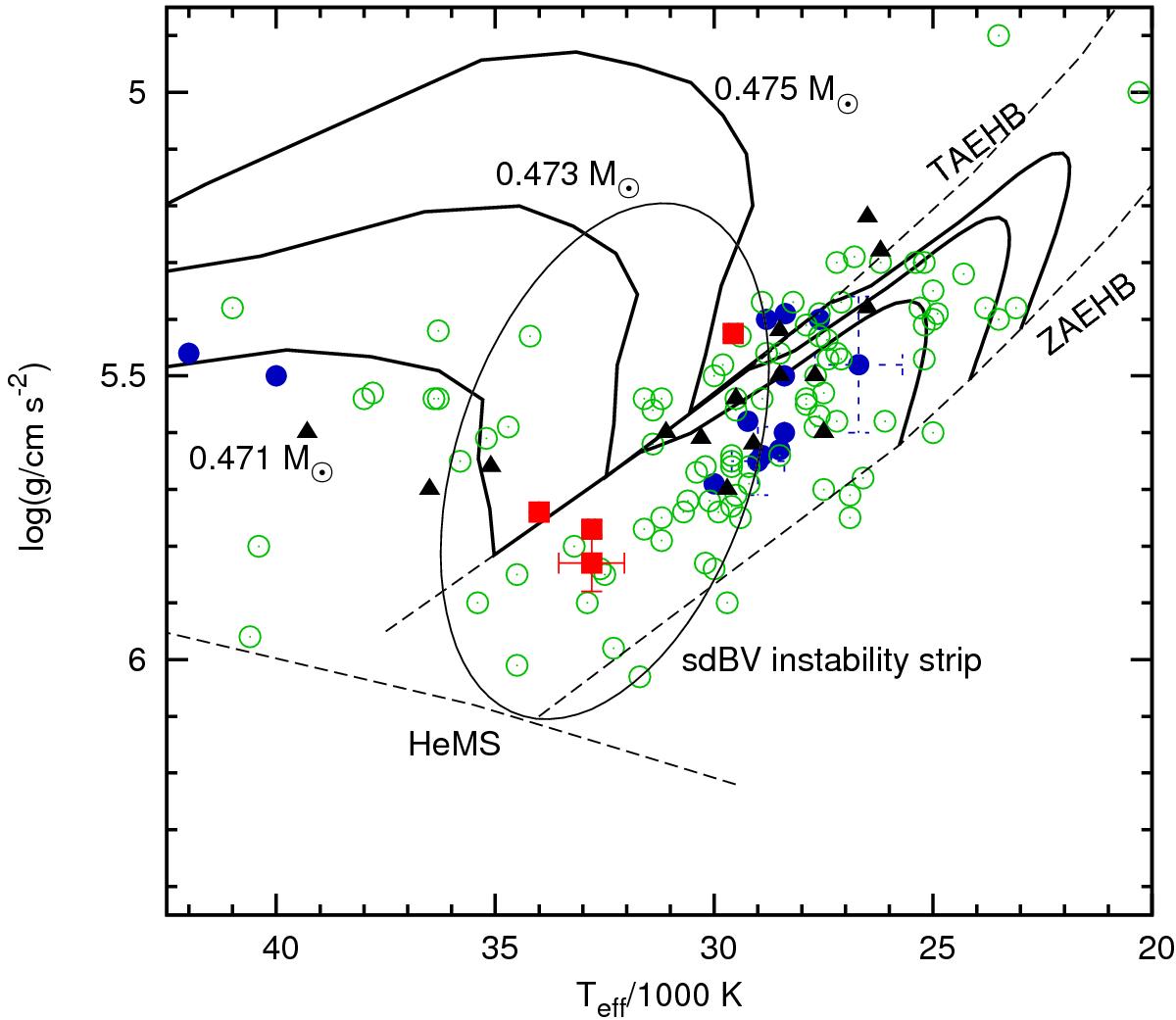Fig. 3

Teff − log g diagram of the HW Vir systems. The helium main sequence (HeMS) and the EHB band (limited by the zero-age EHB, ZAEHB, and the terminal-age EHB, TAEHB) are superimposed by evolutionary tracks by Dorman et al. (1993) for sdB masses of 0.471, 0.473, and 0.475 M⊙. The positions of the HW Vir systems with pulsating sdBs – V2008-1753 (this work, with error bars), NY Vir (Van Grootel et al. 2013), 2M1938+4603 (Østensen et al. 2010), and PTF1 J072456+125301 (Schindewolf et al. 2015; Kupfer, priv. comm.) – are marked by red squares. Blue dots mark the positions of other HW Vir-like systems (Drechsel et al. 2001; For et al. 2010; Maxted et al. 2002; Klepp & Rauch 2011; Østensen et al. 2008; Wood & Saffer 1999; Almeida et al. 2012; Barlow et al. 2013; Schaffenroth et al. 2013, 2014a; Kupfer, priv. comm.). The positions of the two HW Vir systems with BD companions J1622 (Schaffenroth et al. 2014b) and J0820 (Geier et al. 2011) are indicated by the blue dots with error bars. The black triangles mark sdB+dM systems showing a reflection effect but no eclipses (Kupfer et al. 2015, and references therein). The green, open dots represent other sdB+WD binaries or sdB binaries with unknown companion type (Kupfer et al. 2015). The approximate location of the sdBVr instability strip is indicated by an ellipse.
Current usage metrics show cumulative count of Article Views (full-text article views including HTML views, PDF and ePub downloads, according to the available data) and Abstracts Views on Vision4Press platform.
Data correspond to usage on the plateform after 2015. The current usage metrics is available 48-96 hours after online publication and is updated daily on week days.
Initial download of the metrics may take a while.


